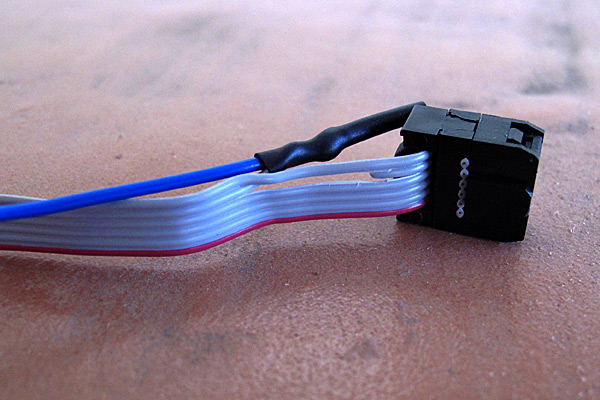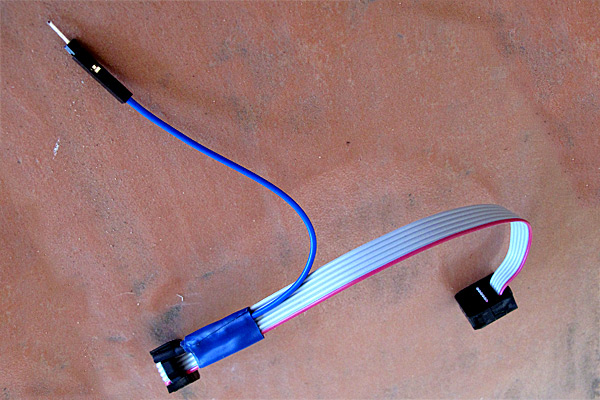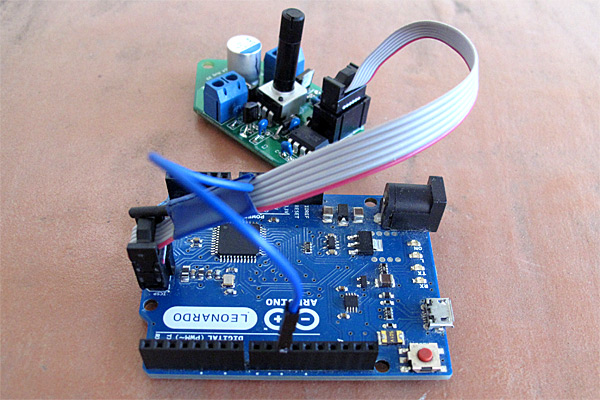Arduino as ISP
For the LED lamp projects, I’ve been using ATtiny13A chips for the dimmer board, programmed with the Arduino IDE and an Arduino board as an In-System Programmer (ISP). The Arduino code is too big for an ATtiny, so I’ve been using a version of the core13 stripped-down system.
I got rather tired of wiring up the 8 wires for the ISP, checking to make sure that each one was correct. What I wanted to do was just plug in a standard 8-pin cable from the Arduino board to the ATtiny board, but the ISP header on the Arduino board has the Arduino reset line, not the reset line that has to go to the ATtiny board.
I decided to modify a standard cable to do the right thing, separating the reset line from the rest. The reset line is on pin 7, so on a standard ribbon cable, it is the seventh of the eight wires.
First I carefully cut wire 7 near one of the plugs with a razor knife, peeled it back and spliced on another piece of stranded wire:

The blue wire and wire 7 of the ribbon cable were soldered together and covered with heat-shrink tubing.
I taped the soldered joint to rest of the ribbon cable for strain relief, and added a crimp-on female header at the other end. (I prefer female crimp-on headers, because they are more versatile than male pin—I can stick in a double-ended male header pin to convert them to male connectors when needed.)

The electrical tape stabilizes the splice and the crimp-on female header allows connecting to male or female headers on the Arduino board. Here there is a double-ended male header pin in the female header, to convert it to a male header.
Here is a Leonardo board being used to program one of the dimmer boards:

With the new cable, it is easy to unplug the cable after programming to test out the system, then plug it back in with the right orientation (I used a shrouded header on the dimmer board) when reprogramming is needed.
Note that the reset line for the ISP cable connects to pin 10 of the programming Arduino board, which would be connected via a USB cable to the laptop that has the Arduino development environment on it.
I’ve seen several kluges on the web for connecting up Arduinos as ISPs, but none were as simple as and easy to use as what I did here, so I thought I ought to share it.
Filed under: Uncategorized Tagged: Arduino, Arduino as ISP, ATtiny, dimmable LED lamps, lamp
[original story: Gas station without pumps]

